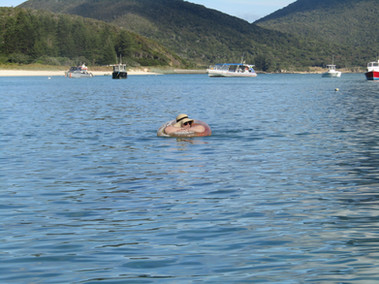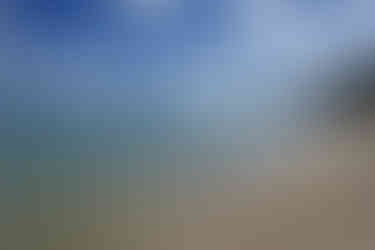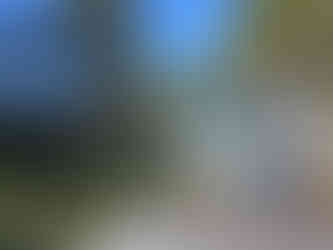Lord Howe Island is a tiny island off the east coast of Australia. It's so small that I've had to draw in the approximate dot on this map.

The island is 10 km long. At its widest point, it's 2 km. At its narrowest, it's 300 m — and that's where the airstrip is, the shortest commercial airstrip in Australia. I've 'borrowed' the next three pictures from the Lord Howe Island Museum so you can see the way the land embraces the lagoon, and how the coral reef stretches from one end of the 'crescent' to the other.
A small and perfectly formed island.
Lord Howe Island is a World Heritage Site. It has forests and wildlife found nowhere else in the world. It also has the world's southernmost barrier coral reef, and the waters around it are a marine reserve, so it's a very popular diving and snorkelling destination. Technically it's part of New South Wales but it's a long way away from Sydney — about 800 km as the crow (or small aircraft) flies.
The two large hills — Mount Lidgbird and Mount Gower — provide a dramatic backdrop to everything that happens. Here are some views across the lagoon ...
... and here are some views of us in the lagoon.
I bought the yellow inflatable tube at a supermarket on Waikiki Beach in Honolulu. Everyone scoffs at it, until it's inflated (by me) ... then everyone wants to use it! My yellow pool noodle from Darwin is also regularly packed in my suitcase. And regularly 'borrowed'.
Have you heard of supping? No, me neither. It's a word derived from 'stand-up paddleboarding', hence supping. Luke, Lee and Suz all supped in the lagoon. Luke reached Rabbit Island (the small island in the centre of the lagoon), where he read his book for an hour or two — leaving us to wonder when to send out the search party.
For more serious snorkelling or scuba diving, you need to take a snorkelling/diving boat out to the reef. The snorkelling boat had a glass bottom, but my photos are not very successful — although you can see the large stingray quite well.
A bit of history. You knew I'd include it, right? The First Fleet landed in Sydney in January 1788. One of the issues with Sydney was the lack of provisions, so the fleet was always on the lookout for places to land, kill the native wildlife and pillage the landscape, in order to resupply Sydney. A British tender ship called HM Supply, commanded by Lieutenant Henry Lidgbird Ball (remember these names), chanced upon our small and perfectly formed island later in 1788 on his way to the penal settlement of Norfolk Island — and blow me down, it was genuinely uninhabited. Unlike the mainland. But I digress.
Ball named the uninhabited island after British Admiral Richard Howe. Then he named two of the biggest prominences (!) after himself: one of the mountains (Mount Lidgbird) and the sea stack situated to the island’s south (Balls Pyramid). Of course he did. We'll come back to Balls Pyramid.
The pillaging and killing of native wildlife succeeded admirably for some decades, during which time some of the endemic birds were wiped out. But it was only in 1834 that the island was first settled, when three couples arrived from New Zealand. The stories of their marriages and remarriages (and multiple children) put Scheherazade to shame; you can look up those stories if you're interested. In a remarkably unoriginal decision, the area of the original old settlement is now called Old Settlement Beach. And no, there are no ruins.

Lovers Bay is another beach on the lagoon side of the island. We cycled as far as we could, then we walked along the beach/rocks to reach a good snorkelling spot.
Ah, I haven't mentioned the cycling! There are very few cars on the island and the standard mode of transport is cycling. So the first thing you do when you arrive on Lord Howe Island is hire a bike. And because it's part of New South Wales, the fine for not wearing your bike helmet is $348. Yes, there is one police officer on the island and he is vigilant about bike helmets.
We stayed at Pinetrees Lodge, one of the oldest establishments on the island. https://pinetrees.com.au/ It's been in the same family for six generations. Highly rated, and highly recommended by us. There are no room keys. Everything is left open. The dining room is outdoors — all meals are served outside. Did I mention that the temperature while we were there was 26°C maximum, 21°C minimum? And the seawater around 25°C? Very, very comfortable.
Despite the fact that supplies are only brought into the island by ship once a fortnight, the food is wonderful. A fair amount is grown on the island and of course there is a lot of fresh (very fresh) fish. The starter one night was some of the best sushi we've ever had — incorporating an 80 kg tuna caught the previous day.

For lunch there is the option to have a picnic packed or a barbecue meal delivered to a picnic spot somewhere on the island. This makes exploring very flexible, obviously, and we had numerous picnic lunches and one barbecue lunch. Fresh kingfish on the barbie!
There's no swimming pool at Pinetrees, but who needs a pool when the lagoon (and the Pinetrees Boatshed) is across the road? The Boatshed has a fully stocked bar for Pinetrees residents, all based on an honesty system. You can watch the sunset with a glass of sparkles, have a shower after your swim in the lagoon or have a picnic lunch here.
I will end off Part 1 with a photo of us at the Lord Howe Island Brewery, open only on Thursday to Saturday evenings. It felt like all the locals were there! https://www.lhislandbrewery.com.au/

More to come in Part 2, including stories about Kentia palms, crashed aircraft, walking adventures (and getting lost), endemic birds and dastardly rats. And more history!




















































































































Comments